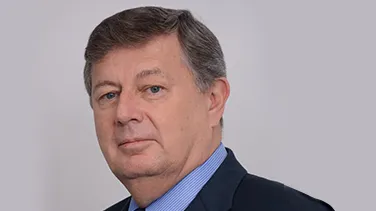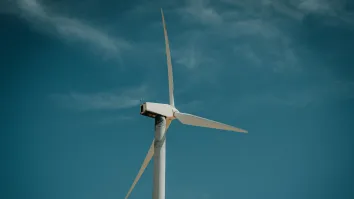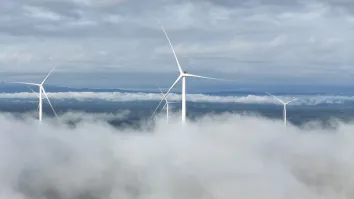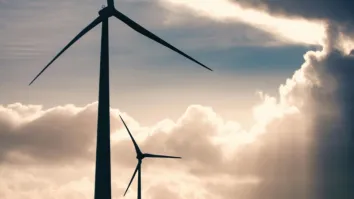
Keeping the Quezon Power on as supply deal extension sits in limbo
The power generator’s power purchase agreement is due to lapse in May 2025.
Coal-fired power plant, Quezon Power, which has been in operation for over two decades, is looking for alternative routes with the looming expiration of its power supply agreement (PSA) with local distributor Manila Electric Co. (Meralco).
In a fireside chat with Asian Power Editor-in-Chief Tim Charlton at the Asian Power Thermal Energy Conference, Quezon Power Managing Director Frank Thiel shared the plant is looking at either selling to retail energy suppliers or operating within the wholesale electricity market.
Quezon Power forms part of the EGCO Group from Thailand, which also owns assets around the globe. In the Philippines, Thiel also manages the first supercritical plant, the San Buenaventura power project, on top of the Quezon Power station.
“We're looking to see what the future may hold for us whether the government in the Philippines will take any direction associated with COP26 [UN Climate Change Conference of the Parties] and some of the agreements that were made there,” Thiel said.
“In the meantime, our focus continues to be to operate our plants as efficiently as possible, and to try and deliver the most reliable power that we can to our customers,” he added.
We don't know yet what the Philippine government will do after COP26. But for Quezon Power Plant, it’s an interesting situation because your power purchase agreement (PPA) with Meralco will expire in a couple of years. Can you walk us through how competitive it's going to be to get renewed? How long is it for?
The agreement is due to lapse in May of 2025. 10 years ago, 15 years ago, when we're looking at the future, we’re thinking that we're going to get an extension to our current PPA because we're a very reliable power station. We're cost-competitive. Five years ago, we began to realise that market conditions are changing. Three years ago, two years ago, we said, the world is going to look vastly different from what we anticipated 10,15 years ago.
What do we want to do with Quezon? Do we want to try and get another PPA or PSA? The answer is yes. We embarked on a program to try and determine what would it take to refurbish our plant, to extend the life of the plant beyond the 25 years of the current power supply agreement. The next thing that we did was, if we're going to try and secure a PSA, how do we go about that? In the Philippines, Meralco has instituted what they call a competitive selection process (CSP).
They will look to contract for a certain amount of megawatts (MW) to be delivered on a certain date and go through a very rigorous process. We saw an opportunity for our project for Quezon Power in this case to try and compete. We're looking to see if there will be room for us in the future when Meralco starts contracting for additional power for 2026, ‘27, ‘28, and beyond; whether or not we will have an opportunity to bid on that. If we're successful, the outcome of that will be perhaps a 20-year PSA. If we're not successful, because obviously, the CSP is very competitive, then we have to look for alternatives.
The things that we're evaluating right now involve, perhaps selling our power to retail energy suppliers. There's a very developed market here in the Philippines for that, and we think we could be very competitive. Our plant has one advantage, that is that we were fully amortised. At this point in time, we can be very competitive with our power rates. If that's the case, we may be able to latch on to shorter-term contracts with retail energy suppliers. The other alternative is to operate within the wholesale electricity market here in the Philippines, and basically become a merchant plant. All of them have a lot of risks. Although there are a lot of challenges, we're trying to position ourselves as best as we can, hoping that we'll be able to get either a long term contract with Meralco or maybe some shorter-term contracts with retail energy suppliers. We would have to adjust our strategy, or how we operate the plant, how we maintain the plant, depending on what we're able to get.
The Philippines has issued a moratorium or a ban on new power projects. And there are two stakeholders here, Meralco and the government. Both of them must also be a little bit concerned about energy security, and about effectively cutting off coal-fired power plants without alternates in place. Is that coming into the consideration basket at all? Do you think that this will be considered to extend the life so they have that energy security?
Within the moratorium, Energy Secretary Alfonso Cusi indicated that any coal-fired plants that were currently in the stages of development will remain in the pipeline. The biggest fear is whether or not you can get financing for those projects. There are about 3,500MW worth of coal-fired plants in the pipeline. But anything after that, the moratorium prevents new coal plants from coming into the Philippines.
The Department of Energy, in particular Secretary Cusi, has been very clear and very vocal about the fact that coal and thermal power has to remain in the energy mix of the Philippines. We're currently 52% of the energy mix for the country. Secretary Cusi recognises that we're not going to be able to transition overnight. We're not going to be able to get away from thermal power for quite some time. I think he realises that the transition is going to take place, but it's going to take quite a bit of time. Now, our customer, Meralco, is very interested in the most competitive power prices that they can get because, obviously, they want to pass that on to the consumers. That's where consumers are looking for reliable, inexpensive power. Meralco has different goals in mind. At the same time, Meralco has a mandate on renewable portfolio standards. They have to source a certain amount of their energy from renewable energy sources. So they're trying to balance those things out.
You said that potential competitors that are going to be bidding for this power supply agreement, may include new gas companies. But as we just found with COP26, gas is now no longer transitional energy. Do you think that may play out in the favor of coal continuing, given the gas is not really a good transition?
We were surprised to see that. Before COP26, natural gas was considered the transition fuel. After COP26, I'm not really sure because COP26 identifies methane as a major source of greenhouse gas emissions; and gas, it's primarily methane. Is that going to make liquefied natural gas (LNG) or gas-fired plants less attractive here in the Philippines? We don't know yet. We need a little bit of time to try and digest all of the things that came out of COP26. We still believe that gas has a major role to play, there's only one gas field in the Philippines, the Malampaya gas field, which provides gas to most of the combined sectors that we have here in the country. Unfortunately, the capacitor, Malampaya, is beginning to taper down. That fuel has to be replaced with something else and the obvious choice is LNG. There are two or three projects already underway to try and bring LNG into the country. Certainly, the government is not going to try and do away with those projects or anything like quite the opposite. I think they're going to support it. The question is, really, are we going to be able to bring additional LNG into the country? Are we going to be competitive with LNG? Again, a lot of it depends on fuel prices. Right now, fuel prices are at an all-time high, But personally, I think we need a little bit more time to try and determine what the government's direction is going to be.
Now, let's talk about the bank's financing. There's a lot of pressure on banks with ESG to hit those targets to cut off any financing of coal. How is that the case in the Philippines or are the local banks saying that they will still support approved coal plants?
We have seen several of the major banks in the Philippines indicating that they will not support new coal. Now, if you go back to them and say, “I'm going to refurbish an assistant plant, I have a long term power supply agreement attached to it,” you could likely get financing or lease for the refurbishment of the units. If I was going to bring a brand new project to the banks, it would be highly unlikely, even amongst the assistant plants that are in the pipeline, that they will be willing to finance. Not all banks are willing to take that on. It's a very, very difficult time to get financing, especially for new plants.
Gas, on the other hand, is less likely to find resistance. I think banks are going to be very happy to finance gas, LNG projects combined cycles. Of course, for anything associated with renewable energy, the banks will be very happy to finance it. I'll give you a look back in 2015, we were trying to get financing for SBPL, San Buenaventura Power. This is the first supercritical plant here in the Philippines. We were oversubscribed. More banks were willing to lend money to the project than we needed. Fast forward to six years, now banks are saying, “We're divesting away from coal.” They're obviously under a lot of pressure to do that, brought on by shareholders, brought on by European country directors, messages coming across the world.
Getting financing for new plants, coal plants, in particular, is very, very challenging. Gas, on the other hand, I think the financial ability is there and there's a lot of liquidity in the Philippine banking sector. Banks are constantly asking for new projects. I think if developers bring forward any new projects, associated with gas, LNG, I think those will get financed. Coal will not likely get financing, except if you're talking about refurbishment supersystem plants.
As an organisation, of course, EGCO has a lot of different power templates and power productions. What are you doing as an organisation to meet your goals of reducing greenhouse emissions by 2030?
The EGCO group is a public company and they have a stated public policy to reduce greenhouse gas emissions 10% by 2030. All our plants are supposed to participate in that effort. For instance, in my plants, we have a very, very large thermal performance group. Their job is to look at the thermal performance of the two stations, look for opportunities to improve our efficiency and reduce heat losses. As a result, we can minimise greenhouse gas emissions in general. We're looking at capital improvements, we're looking at what we can do on the electrostatic precipitators to try and improve on that? We're looking for those opportunities. Could we co-fire different fuels in our boilers? Can we co-fire LNG? Can we co-fire biomass? We've done quite a bit of work associated with that. Interestingly enough, LNG is probably the easiest one, we can actually burn up to 80% LNG in our boiler without making major modifications, and that would reduce greenhouse gas emissions greatly. The question is, how do we make that competitive? Because LNG prices are at a high right now. How do I balance reducing greenhouse gas emissions? We're looking at co-firing biomass.
Case in point, the Drax power station in England, one of the largest in the world with 4000MW, decided to switch over to burning biomass pellets, and they've been successful. The technology is there, the fuel is there, but the question then is, where do I get those pellets? Am I going to bring them over from the other side of the world? That's going to make those pellets extremely expensive. I know I can burn biomass in my boiler. I can reduce greenhouse gas emissions by doing that, but then how do I balance that with the cost of the fuel that I'm going to be using? And how do I keep my power prices competitive? It's a challenge between sourcing fuel that you can actually price economically and at the same time, provide low rates. We have been looking at all of those things, trying to figure out the best way forward to support our company's stated policy of reducing greenhouse gas emissions.



















 Advertise
Advertise







